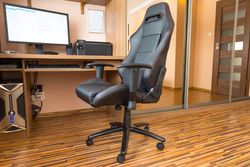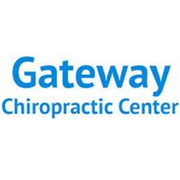How to Adjust Your Desk Space to Support Your Body

Today, many professionals spend most of the day performing low levels of physical activity while sitting at a desk. Many of these desk spaces, however, aren’t optimized for the human body. As a result, office workers often find themselves suffering from a myriad of physical health issues, including chronic back pain, stiff joints, and headaches. If you’re sitting behind a computer for most of the day, here are a few ways you can adjust your workspace to better support your body.
5 Ways to Optimize Your Workspace for Comfortable Sitting
1. Move Your Monitor
If your monitor isn’t at the proper height, you may end up twisting your spine, tilting your chin, or leaning forward to focus on the screen. Holding these positions for extended periods can result in back and neck pain. To reduce stress on the body, adjust the monitor so that it’s aligned with your eye level.
2. Adjust Your Armrests
When you’re sitting, your forearms should be relaxed on the chair’s armrests and your elbows should be bent at 90 degrees. Resting your arms on the desk or in any other position can force your spine out of alignment and slouch your shoulders, as well as contribute to unnecessary muscle tension.
3. Choose a Chair That Supports Your Spine
 To prevent shoulder and back pain, it’s critical to use an office chair that supports the natural curve of your spine—such as those that offer headrests and lumbar support pads. Adjust the height of the chair so you can sit straight with both feet flat on the floor. It’s also wise to use a chair that provides 360-degree swiveling, as this movement will reduce stress to your spine and back muscles.
To prevent shoulder and back pain, it’s critical to use an office chair that supports the natural curve of your spine—such as those that offer headrests and lumbar support pads. Adjust the height of the chair so you can sit straight with both feet flat on the floor. It’s also wise to use a chair that provides 360-degree swiveling, as this movement will reduce stress to your spine and back muscles.
4. Keep the Keyboard and Mouse Properly Spaced
After you’ve adjusted your armrests, move the keyboard and mouse so that it supports your natural posture. Ideally, your keyboard should be no more than two inches above your thighs. If it’s higher, consider a desk with a pull-out tray that lowers the keyboard. To minimize shoulder and neck tension, the mouse and keyboard should be about the same distance apart as your shoulders.
5. Watch Your Wrists
If you experience carpal tunnel syndrome or arthritis, your wrists may need extra support. Place a cushioned wrist pad in front of the keyboard to take tension off the hands.
If you continue to experience chronic pain or discomfort after making these adjustments, consult with the professionals at Gateway Chiropractic Center in Crossville, TN. Under the care of experienced chiropractor Dr. Michael Ellis, you can uncover the specific cause of your symptoms, such as spinal misalignment and joint inflammation. Through customized chiropractic adjustments and other non-invasive treatments, Dr. Ellis will help eliminate areas of tension, promote healing to damaged tissues, and relieve pain. To learn more about these services, visit the Cumberland County chiropractor online. For appointments, call (931) 484-3135.
About the Business
Have a question? Ask the experts!
Send your question

